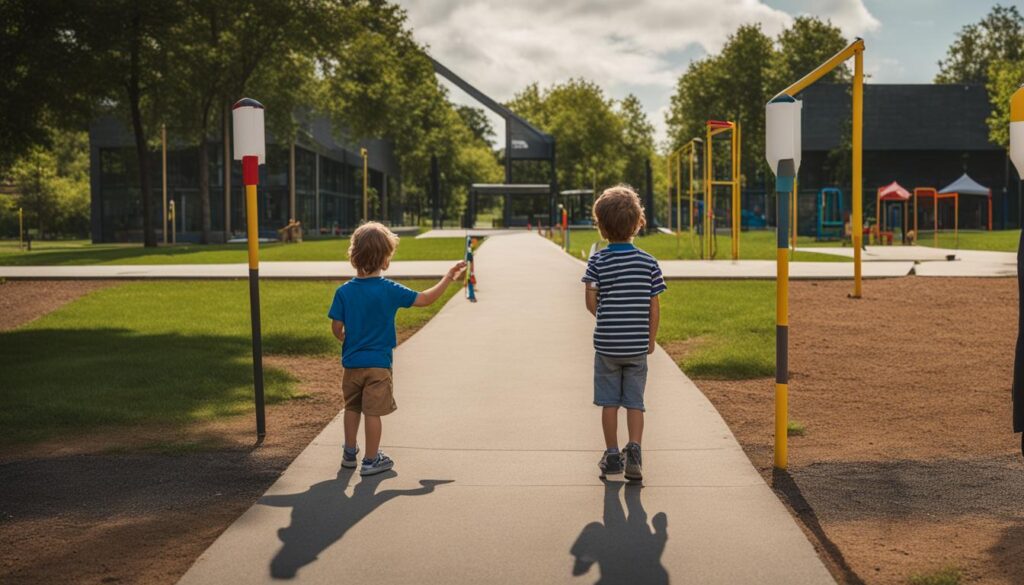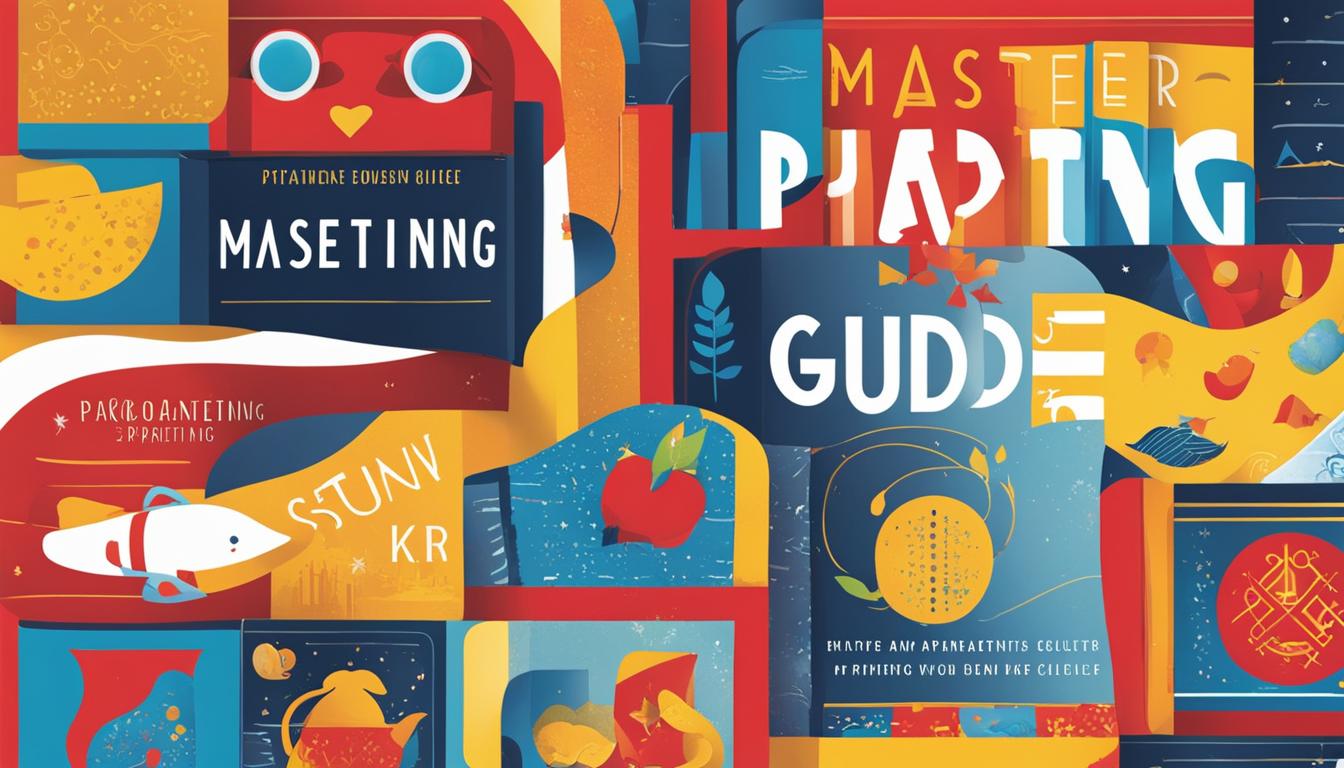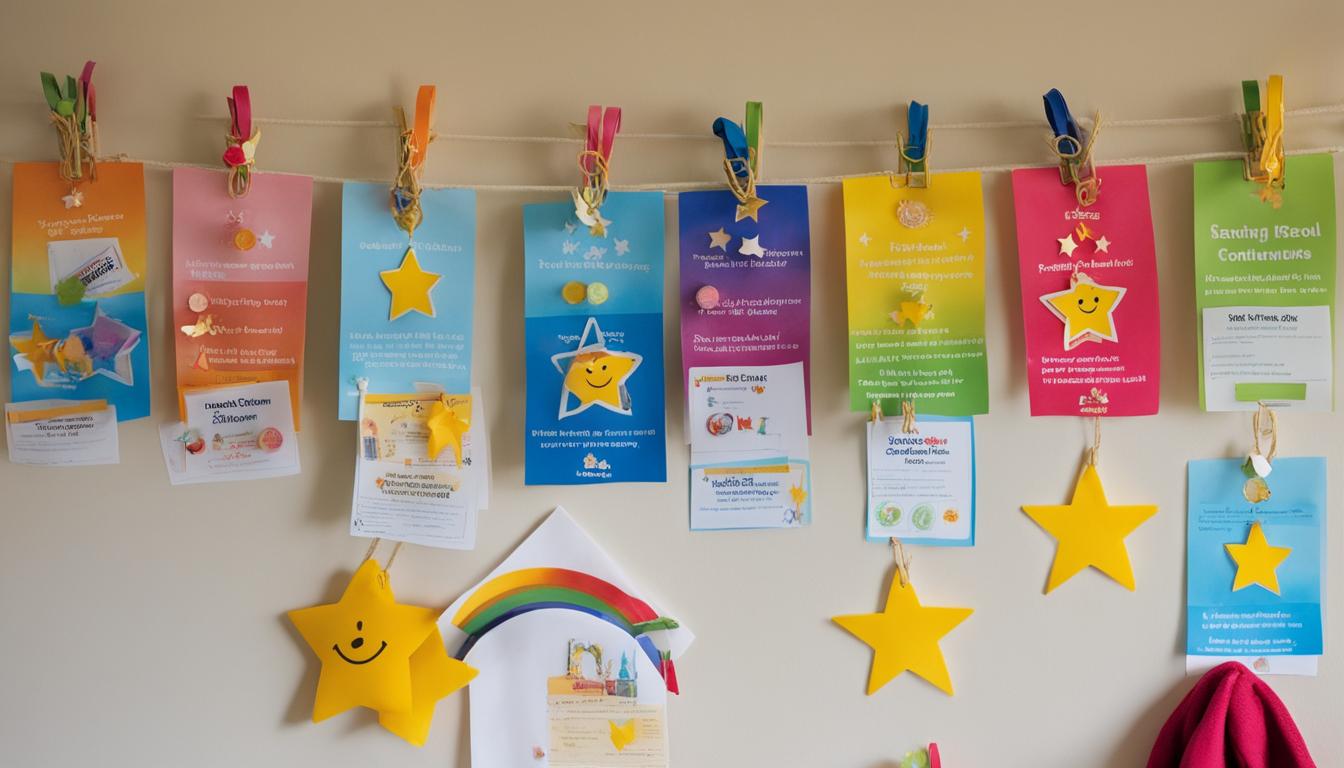Unlocking the Secret: Creating Effective Boundaries for Kids
As I delve into the world of parenting strategies, I’m continually drawn back to the pioneering work of Ronald Ferguson, a Harvard economist with a keen focus on the educational and developmental outcomes of children. Through my journalistic lens, I’ve observed that establishing healthy limits for children is more than just a parental afterthought—it’s a catalyst for success. Ferguson’s co-authored work, “The Formula: Unlocking the Secrets to Raising Highly Successful Children,” becomes a transformative guide for me and countless others seeking to navigate the complex task of setting boundaries with children.
In the journey toward fostering mastery in parenting, Ferguson outlines an indelible framework of support that begins long before a child steps into a classroom. It’s the “early lead effect,” where the seeds of curiosity are sown, and the fruits of encouragement from educators further nourish a burgeoning love for learning. Creating effective boundaries for kids, as Ferguson highlights, is an art that encompasses guiding, nurturing, and progressively releasing, allowing a child to grow with confidence and independence.
Skip To The Following Sections
- Understanding the Role of Boundaries in Child Development
- Key Boundaries to Establish with Your Children
- Teaching Kids About Boundaries Through Daily Interactions
- Recognizing and Respecting Children’s Personal Space and Limits
- Emphasizing the Positive Effects of Boundaries on Behavior
- Building Healthy Boundaries for Kids in the Digital Age
- Responding to Boundary Testing: How to Handle Pushback from Kids
- Celebrating Milestones and Success in Boundary-setting with Children
- FAQ
- What are effective strategies for creating boundaries for kids?
- Why are boundaries important in a child’s development?
- How can parents teach kids about boundaries on a daily basis?
- What techniques can be used to set age-appropriate boundaries for children?
- How can I encourage my child to respect personal boundaries?
- What role do boundaries play in promoting positive behavior in children?
- How can I manage my child’s screen time and internet use effectively?
- How should parents respond to children testing boundaries?
- How can I celebrate my child’s success in adhering to set boundaries?
- What are some strategies for implementing boundaries within family dynamics?
- Source Links
Key Takeaways
- Becoming an “early learning partner” is instrumental in establishing an early lead in children’s educational paths.
- Creating effective boundaries supports a child’s development of autonomy and self-advocacy skills.
- Intentional parenting involves fulfilling various roles that cater to both the child’s intellectual and emotional growth.
- Master parenting goes beyond high involvement to foster independence and personal choice in children.
- Clear and consistent boundaries set by parents are a cornerstone of raising successful, well-adjusted children.
Understanding the Role of Boundaries in Child Development
As I delve deeper into the world of child rearing, I’m struck by the profundity of a simple truth: the importance of setting boundaries for children cannot be overemphasized. It is an integral piece of the parenting puzzle, with long-term implications for child development. In my exploration of various parenting techniques and philosophies, the work of Ronald Ferguson stands as a beacon, sifting through the noise to provide clear, actionable parental guidance.
I’m drawn to the compelling narrative Ferguson weaves, highlighting the roles that embody masterful parenting. These are not just titles or fleeting strategies; they are essential personas that parents adopt to guide their children through life’s labyrinth. Here lies the intersection of structure, love, and growth, where boundaries are the gossamer threads that support and propel.
The ‘early learning partner’ plants seeds of curiosity and joy in learning, while the ‘flight engineer’ ensures the child’s necessities in their learning environment. The ‘fixer’ jumps in to secure critical opportunities, demonstrating that parental guidance involves strategic navigation through life’s challenges.
- Revealer – transitioning kids to a world filled with wonder
- Philosopher – instilling purpose and critical thinking
- Model – setting an example for emulation
- Negotiator – teaching the art of respectful self-advocacy
- GPS Navigational Voice – offering wisdom from afar as children mature
There is a stark contrast between these roles and other parenting styles which, while similarly high in parental involvement, differ in philosophy and execution. Helicopter parenting, for example, often stifles a child’s development of independence, while tiger parenting imposes narrowly defined paths. Master parenting, on the contrary, recognizes the importance of setting boundaries for children in a manner that promotes autonomy, allowing children to craft their own destinations with a compass of values and skills. This distinction crystallizes as one examines the evidence that healthy boundaries serve as the scaffolding for a resilient and self-sufficient character.
As we bridge the gap between theory and practice, the visible outcomes of these roles in master parenting begin to flourish in the real world. The overarching goal is not merely to produce successful offspring but to foster individuals capable of navigating a complex world with grace, empathy, resilience, and purpose. It is these qualities, modeled and reinforced through consistent boundaries, that germinate into the cornerstone of mature character formation.
Key Boundaries to Establish with Your Children
As I reflect on my parenting journey, the concept of setting boundaries with children oozes significance. It lays the groundwork for healthy family dynamics and feeds into the long-term success of our little ones. The roles I’ve observed in master parenting aren’t just titles; they are commitments to fostering internal motivation and resilience in children.
The Importance of Consistency and Clarity
In the mosaic of parenting, two pieces are particularly foundational: consistency and clarity. Harmoniously blended, they underpin the entire structure of boundary setting techniques for kids. Whether it’s bedtime routines or expectations around behavior, consistency and clarity make the rules of life known and dependable. I’ve come to realize that when I waver or blur the lines, the little eyes watching me learn uncertainty instead of stability.
Age-Appropriate Boundary Setting Techniques for Kids
One hallmark of adept parenting is tuning into the developmental stage of each child. The spectrum ranges from simple mandates like ‘no hitting’ for toddlers to more nuanced discussions about online safety with teens. Regardless of age, the techniques I embrace must resonate with their ever-evolving understanding. Teaching kids about boundaries is an artful progression—beginning with concrete dos and don’ts and evolving into complex concepts of personal space and respect.
- For toddlers, it’s about gentle corrections and positive reinforcement.
- As they enter preschool, it’s story-time with moral messages.
- School-aged children benefit from a clear reward system for good behavior.
- Teens need open dialogues and the reasoning behind boundaries.
Creating a Balance Between Guidance and Independence
The balancing act of being available for guidance while fostering independence is a tightrope I walk daily. It involves knowing when to hover and when to step back, allowing for autonomy. It’s about creating a safe environment where mistakes are not just tolerated but seen as stepping stones to learning and growth.
Master parents understand the importance of creating boundaries within family dynamics that craft a bridge from childlike dependence to the sturdy terrain of self-sufficiency.
Setting these boundaries is a dynamic and ongoing process, one that requires adjustment and recalibration as kids grow and change. It’s not static; it’s as alive as the children we’re nurturing. My task is to adapt, to listen, and to provide the right measures of freedom and structure appropriate for each age and stage.

As I’m engrossed in this parental odyssey, focusing on the number 4 – the core pillars of respect, stewardship, self-control, and responsibility – becomes increasingly prominent. These foundations lay the groundwork for all other boundaries and ensure that as my family evolves, the roots we’ve planted remain firm, nurturing a garden of thriving individuals.
Teaching Kids About Boundaries Through Daily Interactions
My involvement in nurturing the growth and development of my child is a continual process, ripe with daily child-parent interactions. These interactions are not merely for the purpose of communication—they are essential components for shaping children’s social skills. In my quest to create an environment which respects children’s boundaries, I have discovered interactive tools and methodologies that serve to teach valuable lessons in a manner that resonates with my child.
In the fabric of our day-to-day lives, respect becomes a mutual thread woven through all our dealings, symbolizing the understanding that while close, our personal spaces are ours alone to govern.
I’ve noticed that teachable moments occur often when least expected and that these instances can be harnessed to underscore the value of healthy friendships. Encouragement, support, and trustworthiness are not merely virtues to be admired but practices to be implemented in all facets of life.
- Using task cards to role-play scenarios teaches my child to navigate social situations with grace and to understand different perspectives.
- Storytelling has become an enriching way to illustrate healthy relationships, with each tale imparting a lesson on the depth and breadth of true friendship.
- Everyday moments—like sharing a toy or choosing a group activity—become opportunities to emphasize the importance of fairness and mutual consent.
Integral to this educational voyage is the act of respecting children’s boundaries. It’s about affirming their right to privacy, their freedom to choose, and their voice to express dissent. By consistently honoring these boundaries, they learn to extend the same courtesy to others – powerfully shaping their social skills in all group dynamics they may encounter.
As I interact with my child on a daily basis, I’m conscious of my responsibility to show, not just tell. My actions demonstrate boundaries, and through observation, my child learns to recognize them in real-world situations. It’s a delicate balance, but one that, day by day, builds the foundation of a conscious, competent, and considerate individual.
The path of guiding a child is etched with numerous opportunities for lessons on boundaries and personal space, and with each one, I witness the remarkable process of a new facet of their character taking shape.
In doing so, the groundwork is laid for my child not just to succeed individually, but to contribute positively to the society in which they are an integral part. And perhaps, that is the most cherished outcome of all in this unique journey of parenting.
Recognizing and Respecting Children’s Personal Space and Limits
In my personal journey as a parent, one aspect that continually surfaces as pivotal is the recognition and respect for children’s personal space. Observing my own children’s interactions, I’ve come to understand that respecting their boundaries is not just good parenting; it’s instrumental in helping them grow into well-adjusted individuals. It’s fascinating how early and clearly implemented family boundaries contribute to a child’s sense of safety and self.
Helping Children Understand the Need for Personal Boundaries
When I introduce the concept of personal boundaries, I often liken them to an invisible bubble that surrounds us all. It’s a space where thoughts, feelings, and possessions reside. It’s a place where we can be ourselves without intrusion. Whether it’s their body, their emotions, or their belongings, I aim to teach my children that they have a right to this space, and that respectful communication is key to honoring others’ spaces as well.
Equipping children with the understanding of personal space helps them learn to advocate for themselves and respect others, better preparing them for the array of interactions they will encounter in life.
Strategies for Implementing Boundaries Within Family Dynamics
As a family, we’ve adopted a number of strategies for implementing family boundaries. It’s a collective effort, involving constant reinforcement and real-life examples:
- We discuss scenarios where someone’s personal space might be compromised, and together, we find solutions.
- We prioritize family meetings to negotiate personal needs, recognizing that each family member’s voice is valuable.
- We establish household rules, making them clear and consistent, thereby setting a benchmark for acceptable behavior.

Moreover, we’ve realized the importance of adaptability. Like the number 6 — dynamic and open on one end yet connected and grounded at the base — we strive to be flexible while maintaining a secure foundation for our boundaries.
Encouraging Respectful Communication and Mutual Trust
When it comes to any relationship, but especially with children, respectful communication is the bedrock of trust. I consistently model this behavior, ensuring that my children feel heard and understood. This, in turn, encourages them to openly share their feelings, knowing that their personal limits will be respected.
- I listen actively, giving full attention when my children speak to convey that their words matter.
- I speak with kindness, articulating that while our ideas may differ, mutual respect prevails.
- I foster an environment where trust is built through keeping promises and respecting confidences.
Mutual trust within our family strengthens the fabric of our interpersonal relationships, making every member feel secure in knowing their personal space and emotional well-being are safeguarded.
Emphasizing the Positive Effects of Boundaries on Behavior
As I reflect on my experiences in parenting, I am consistently reminded of how crucial clear and appropriate boundaries are for the development of children. Groundbreaking literature such as “Boundaries with Kids” by Drs. Henry Cloud and John Townsend articulates the idea that not only do boundaries maintain order, they also instill a sense of responsibility in children. Boundaries, they argue, act as preventative medicine—a way to build the character’s immune system, warding off future behavioral ills with the vaccine of self-discipline.
Through my journalistic endeavors, I’ve seen firsthand the positive behavior reinforcement that comes from setting firm yet loving limits. It’s one thing to enforce rules, but another entirely to see a child internalize these values, an outcome that makes every effort worthwhile. Establishing regular bedtimes, for example, is more about crafting a sense of time management in a child’s psyche than just ensuring they get sufficient sleep.
When we set boundaries with love and enforce them with consistency, we are actively promoting responsible behavior in our children that will last a lifetime.
- Respect is not just given but earned and reciprocated due to the mutual understanding of boundaries.
- Chores become less about the task and more about the lesson in stewardship and work ethic.
- Limits on screen time foster creativity and encourage children to engage with the world around them.
The effects of boundaries on children may not always be immediately visible, but they are profound. These invisible structures guide children as they navigate their worlds, both inner and outer. By knowing the limits, children learn where they can push and where they must hold back, honing the self-control that becomes pivotal in adult life.
Reward systems, a vital tool for encouraging positive behavior, align closely with the concept of the ‘law of sowing and reaping,’ a principle highlighted in “Boundaries with Kids”. Rewards mirror life’s natural consequences, educating children that responsible behavior yields positive outcomes, both materially and emotionally.
- Demonstrating what happens when boundaries are respected by rewarding positive behavior.
- Allowing natural consequences to teach valuable life lessons when boundaries are challenged.
- Using a jobs-and-allowance system to impart financial responsibility alongside household contribution.
Yet, boundary setting is not just a solitary act. It’s a communal endeavor, a joint venture between parent and child where each has a role to play. It’s a delicate dance that evolves as the child grows, shifting from protector to guide to confidant as children become teens and young adults. The balance shifts, but the central premise remains: reliability and love in boundaries lay the groundwork for healthy adulthood.
In my journey of chronicling parenting wisdom, it has become clear that the most profound lessons are often encapsulated in the smallest moments. A reminder to put toys away ignites an early sense of responsibility. The implementation of a time-out not as punishment but a chance for reflection teaches self-regulation. And the steady hand that guides with a consistent structure allows a child to find security in knowing where the rails are, giving them the freedom to explore within safe confines.
Indeed, the integration of boundaries into day-to-day practice is not about restriction but about preparation. It’s a path paved with the intention of preparing children not just for the challenges they face today but for the lives they will lead tomorrow.
Building Healthy Boundaries for Kids in the Digital Age
In this digital era, my role as a parent necessitates inventing new rules and reshaping old ones, particularly when it comes to digital age boundaries for kids. Navigating a course through the choppy waters of technology often feels daunting, but it’s clear that setting limits with screen time and guiding internet use is crucial for the well-being of our children.
Setting Limits with Screen Time and Internet Use
When I ponder screen time limits, I consider not just the quantity but also the quality of the digital content my kids are exposed to. It’s less about clock-watching and more about ensuring their online experiences are enhancing their lives, not diminishing them.
- Limits are tailored to the child’s age, developmental stage, and necessary screen time for homework or educational initiatives.
- Leisure screen time is earned, it doesn’t come freely, and it’s balanced out with plenty of physical activity and downtime.
- Weekends and holidays have adjustable limits, but the foundation stays the same—activities away from screens are prioritized.
Teaching Online Safety and Privacy Boundaries to Children
Explaining online safety for children is reminiscent of teaching them how to safely cross the street. They need to understand the dangers to avoid harm. We talk about personal information as something valuable and private, like the money in their piggy banks.
Just as we wouldn’t share our house keys with strangers, we don’t share our personal information online without parental guidance.
- We review privacy settings together to understand who can see what we post, shaping their digital footprints responsibly.
- I demonstrate how to use the internet for learning and connect with them over interesting finds to promote positive usage.
- Together, we go over scenarios of encountering strangers online and devise action plans, emphasizing the ‘no talking to strangers’ rule in the virtual playground.
Effective Ways to Monitor and Enforce Digital Boundaries
The act of monitoring screen usage is less about surveillance and more about engagement. I stay updated with the apps and platforms my children use, learning the ins and outs to ensure I’m not just supervising from afar but participating in their digital world.
- Utilizing parental controls is a proactive measure, setting explicit boundaries about what content is off-limits.
- Regular check-ins at designated intervals maintain a balance between trust and vigilance, fostering open communication.
- Providing alternative entertainment options ensures that my kids don’t feel boxed in by boundaries but see them as part of a varied palette of activities.
In culmination, these strategies center around the keyword “8” — a symbol for infinite learning, growth, and adaptability. By fostering a loop which values both freedom and protection, we can guide our children toward a balanced and conscious digital existence.
Responding to Boundary Testing: How to Handle Pushback from Kids
In my years as a parent, I’ve learned that dealing with boundary testing is an integral part of the child-rearing process. It’s a given that children will test the limits—we know this isn’t indicative of defiance, but rather a natural part of growth. However, it’s how we handle this child pushback that truly solidifies the efficacy of the boundaries we strive to establish.
One of the most effective approaches I’ve found is maintaining consistency. Children are adept observers, noticing every instance when we bend the rules and every time we stand firm. By presenting a united front and holding steady, I’m not only upholding established boundaries, but I’m also teaching them the value of respect and the meaning of our family’s principles.
Facing the storm of resistance with a calm and understanding demeanor has often diffused tense situations more effectively than any punishment could.
Let’s not underestimate the power of clarity. When communicating limits, I aim for unmistakable clarity—avoiding complex jargon or convoluted reasoning that could muddy their understanding. I find that explaining the ‘why’ behind a rule usually leads to better adherence than merely dictating it.
- Describe the rule clearly and why it’s in place.
- When dealing with infractions, remind them of the rule and the reason.
- Use age-appropriate language to ensure they comprehend the boundaries.
Of course, there’s also room for flexibility. If a boundary I set no longer serves its purpose or needs to be adjusted based on their developmental stage, I’m not afraid to re-evaluate. This adaptability demonstrates that while the importance of maintaining established boundaries is paramount, the well-being of my child comes first.
- Review boundaries periodically to ensure they are still relevant and effective.
- Engage in conversations with my kids about how rules may evolve as they grow.
Finally, it’s about picking battles wisely. Not every act of boundary testing warrants a significant response. Sometimes a simple, firm reminder is sufficient, while other times may call for more comprehensive discussions or consequences. Balancing these aspects helps me navigate the ebbs and flows of parenting while maintaining established boundaries.
In the end, responding to boundary testing is not a one-size-fits-all scenario. It involves a combination of steadfastness, clarity, flexibility, and wisdom—a blend that is as unique to each family as the children being raised within it.
Celebrating Milestones and Success in Boundary-setting with Children
In my personal journey, the moments which resonated most deeply weren’t just the trials and challenges of setting up boundaries, but equally, those instances when I had the opportunity to celebrate boundary milestones with my children. Recognizing boundary-setting success goes hand in hand with reinforcing the broader parenting mission. Whether it was the first time they remembered the rules without prompting, or when they thoughtfully respected a sibling’s privacy, these milestones deserve recognition.
I’ve learned that reinforcing positive behavior in children and acknowledging their achievements can inspire a persistent commitment to the boundaries we’ve set together. Just as adults, children thrive on positive reinforcement—it’s a powerful tool that sustains a culture of mutual respect and self-discipline within the family. These small celebrations act as signposts for them, marking the progress they’ve made and the mature understanding they’ve developed of personal space and limits.
So, as I continue on this parenting path, I make it a point to look out for and honor these milestones. By sharing joyous moments when my child independently respects a boundary or demonstrates clear self-control, it communicates the message that I see and value their growth. More importantly, it supports and nourishes an environment where the principles of boundaries flourish, sculpting the character and behavior of the future adults I’m raising.
FAQ
What are effective strategies for creating boundaries for kids?
Effective strategies for creating boundaries include being clear and consistent, introducing age-appropriate boundary-setting techniques, balancing guidance with independence, and using day-to-day interactions to teach about boundaries.
Why are boundaries important in a child’s development?
Boundaries help children understand social norms, learn self-control, develop responsibility, and feel secure. They are crucial in shaping a child’s behavior and helping them navigate interpersonal relationships.
How can parents teach kids about boundaries on a daily basis?
Parents can teach kids about boundaries through daily interactions by setting clear rules, modeling respectful behavior, discussing the reasons behind boundaries, and using real-life situations as teachable moments to reinforce the concepts.
What techniques can be used to set age-appropriate boundaries for children?
Techniques include using simple language for younger children, establishing routine-based limits, gradually increasing responsibilities as they grow older, and involving them in the rule-setting process to understand and adhere to boundaries.
How can I encourage my child to respect personal boundaries?
Encourage respect for personal boundaries by discussing the concept of personal space and limits, role-playing different scenarios, teaching communication skills for expressing boundaries, and respecting your child’s own boundaries as an example.
What role do boundaries play in promoting positive behavior in children?
Boundaries play an integral role in promoting positive behavior by teaching children the consequences of their actions, helping them develop empathy, and giving them a framework to understand what is acceptable behavior within their family and society.
How can I manage my child’s screen time and internet use effectively?
Manage screen time and internet use by setting clear and consistent limits, creating a schedule that includes offline activities, discussing online safety, and monitoring digital usage while still ensuring privacy and trust.
How should parents respond to children testing boundaries?
Parents should respond to boundary testing with calmness and firmness, maintain consistency in enforcing rules, explain the reasons behind boundaries when appropriate, and apply consequences related to the boundary that was challenged.
How can I celebrate my child’s success in adhering to set boundaries?
Celebrate boundary success by acknowledging your child’s efforts to respect limits, offering praise or rewards for positive behavior, and reinforcing the personal gains they achieve through their responsible actions.
What are some strategies for implementing boundaries within family dynamics?
Strategies include having family meetings to discuss and agree on rules, ensuring every family member understands their role in maintaining boundaries, and addressing individual needs while upholding the family’s core values and expectations.
Source Links
- https://theresponsivecounselor.com/2021/03/teaching-kids-about-healthy-friendships-and-friendship-boundaries.html
- https://news.harvard.edu/gazette/story/2019/04/harvards-ronald-ferguson-explores-how-to-raise-successful-children/
- https://www.barnesandnoble.com/w/boundaries-with-kids-henry-cloud/1100011969




